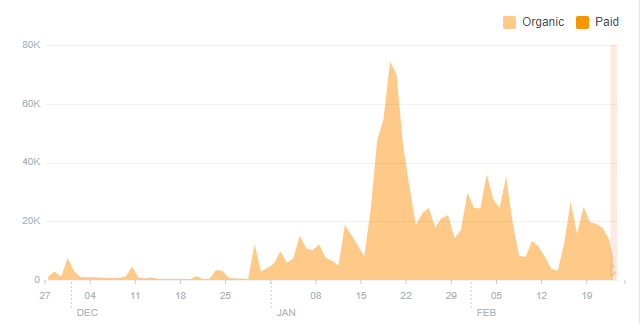
This is a topic that we at Jellison Group Ohio discuss frequently with companies—why the organic reach isn’t very high for the posts on their Facebook page.
Now, it’s no secret that, since 2018, Facebook has been making tweaks to their algorithms to limit the organic exposure that pages get. Part of this is due to the fact that there’s so much content being generated and consumed every single day; looking solely at video, Facebook generates 8 billion views every 24 hours. With the average user only spending 20 minutes per day on the platform, there’s only so much content he or she can see during that time frame.
Reason number two? Facebook is in business to make money, and they know that people will pay to make sure their content gets seen. So obviously Facebook will push that content out to users before they show your audience the post from your page that day. Wherever advertisers know that there is attention from the target audience, they’re going to spend ad money there.
But we’re not talking about paid advertising today. We’re talking about organic Facebook posts—a.k.a. free advertising for your company’s page, since all it takes is some time on your end to create a post and hit publish.
It’s not that easy, though.
Anybody can create what they think is a great post for their audience and hit publish. And then when it reaches a fraction of their page likes, it’s easy to sit there and blame Facebook and its algorithm. But the truth is… it’s probably you.
Here at Jellison Group Ohio, we pride ourselves on being able to master the Facebook algorithm and get pages we manage the maximum organic reach possible. We’re able to consistently help companies reach more people than they thought possible, in part due to these two basic rules we follow:
● #1 – Content. This is where everything starts. You need great content. You need content that is engaging, authentic, entertaining, and more. Just remember that your entire audience probably doesn’t care about what you’re talking about—especially anywhere close to the level that you do–unless it’s presented in a way that they want to care. Sharing content every day to hit your quota of how much you think you should be doing is actually hurting you in the long run, as opposed to posting amazing content a couple times a week. And sales-y content? Don’t even think about it. Not only will Facebook pick up on it and limit the reach, but as we’ve said before: people hate being directly sold to.
● #2 – Timing. Facebook isn’t like it used to be, or like how Twitter is now: just because you post something doesn’t mean it’s going to show up in your audience’s news feed (this goes for your personal account as well). Back in the day, posts on Facebook showed up in chronological order, so if you posted something, there was a really good chance that your audience was going to see it (assuming looked on their news feed in a reasonable time period). Now, Facebook has its algorithms that try to determine what your audience wants to see, and show then show them that content. But that doesn’t completely take away the timing factor—you have to optimize your posting time for your audience. For example, if your target audience is young adults or college kids, posting something on Friday night probably isn’t going to perform well. Just like posting something on Wednesday at 10 am probably won’t do well if you’re trying to hit business professionally. Facebook literally tells you the average number of your audience that is on Facebook for each hour of each day. Use this data along with some common sense to post at the ideal time.
These are two very basic rules to follow when it comes to getting the maximum reach out of posts on your business’s Facebook page. If you don’t master these two “baby steps,” there’s no point in even digging in deeper to figure out the Facebook algorithm.
So if your company is struggling with its effectiveness on Facebook and needs a strategic business partner to figure things out, get ahold of Jellison Group Ohio today. We’ll take a look at how well your current social strategies are working and help get you started down the right path to extremely effective social media marketing.
